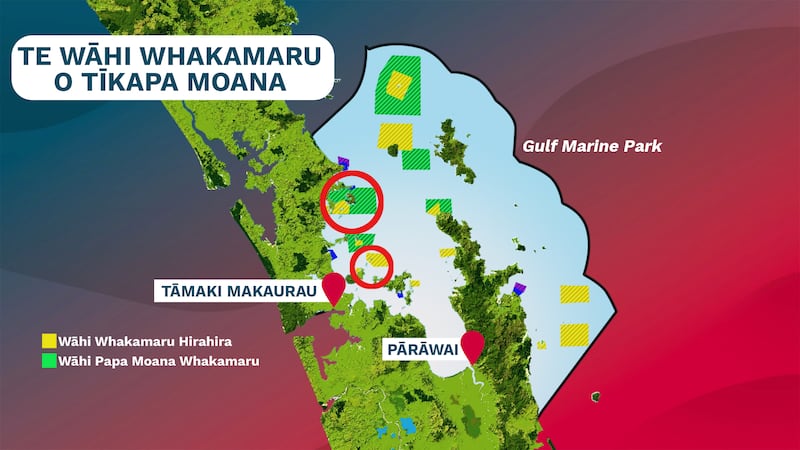Amendments to the Tīkapa Moana Marine Protection Bill to permit commercial fishing will go ahead, horrifying iwi and advocacy groups
“We see once again that money talks and that we are left with a degrading moana,” Kelly Klink of Ngāti Rehua Ngāti Wai ki Aotea says. “We don’t have anything left in it anymore.”
The cabinet’s last-minute decision will allow limited commercial ring-net fishing high protected areas and seafloor protection areas. All up that’s 19 new marine protection areas.
“We need to stop these practices that are archaic and actually really revisit how we’re gonna look after that moana. And right now we need to be giving back not taking out,” Klink says.
LegaSea spokesperson Sam Woolford says he was bewildered when he heard the news. “Incredibly disappointed, frustrated but not actually really surprised,” Woolford says.
But what ring-net fishing means is unclear.
“We don’t actually know. It’s an offshoot of purse seining fishing, so it’s a similar technique to that but we don’t know exactly what species are gonna be targeted. We don’t know when the fishing season will effectively be and we don’t even know if they’re limitations on the size of the boat. So it’s all very ambiguous.”

Ring-net fishing allowed
An expert on the Hauraki Gulf and marine scientist Professor Simon Thrush says his concern is “what it means to the state of protection that can be imposed on the marine ecosystem when commercial fishing is allowed”.
Thrush who co-authored a report on how to revive the Tīkapa Moana / Hauraki Gulf says the bill was set to protect the biodiversity, with Aotearoa joining nearly 200 parties to protect 30% of land and ocean globally by 2030.
Thrush believes Minister Tama Potaka doesn’t seem to know what he is doing.
“Yeah, it’s hard to know whether the minister is really on top of understanding these kind of issues. I’m sure as part of the coalition he’s trying to balance many different viewpoints but we’d hope as minister of conservation he’s focused on conserving some of our marine estate,” Thrush says..
The proposal would allow ring-net fishing within the two high-protection areas of Kawau, Rangitoto and Motutapu area between March and August
“That bill has no place in Te Ao Māori and that belongs in Pākehā legislation. So for us, it’s about honouring the partnership honouring Te Tiriti and moving forward that way,” Klink says.
The government says the new marine protection areas will nearly triple the space protected in the Gulf.
Since Monday’s original broadcast Te Ao Māori News has updated the article to give more context from Minister Tama Potaka’s office stating that the limited commercial fishing allowed in two High Protection Areas (of Kawau Bay and the Rangitoto and Motutapu), “they total about 50 square kilometres in size – that’s only about three per cent of the total 1500 square kilometres of High Protection Area.”
“There will be about 5 commercial operators allowed to continue ring-net fishing not dredging. These existing operators use small vessels less than 6 metres in length,” stated the Minister’s office.
In response to what Ring-net fishing is, the Minister’s office stated that “Ring-netting as a method has very little impact on the environment beyond the target species removed. Ring-netting operates from small vessels and involves deploying a net to target an identified aggregation of target species.”
For additional and developing coverage on this issue, see the following articles:
Using the poor to justify commercial fishers in Hauraki Gulf protected areas - ‘weak’, iwi leader says (aired 16.10.24)
Potaka undeterred by criticism impact commercial fishing may have in Hauraki Gulf (aired 15.10.2024)
Hauraki Gulf Tīkapa Moana bill amendments a slap in the face for mana whenua and advocate groups (aired 14.10.2024)



